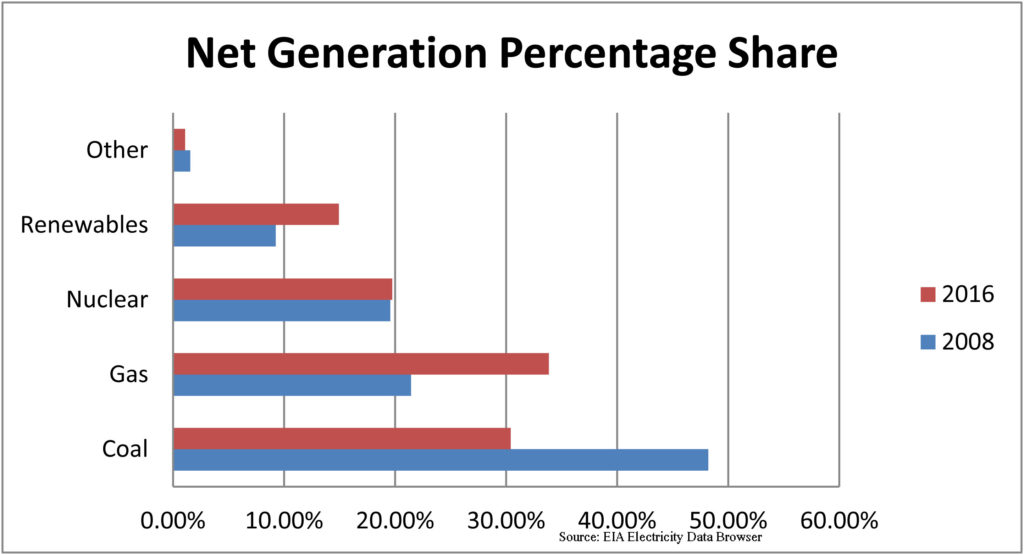The Trump administration’s budget proposal for the coming year threatens to do exactly what the president promised as a candidate: eviscerate federal funding for climate change programs. The Energy Department’s highly successful renewable energy office would be particularly hard hit, with the administration’s proposal calling for a roughly 70 percent cut in funding—from just over $2 billion currently to $639 million next year. While wrong-headed, the proposals won’t slow the nation’s renewable transition, which is now being powered, to a large extent, by the corporate sector.
This change, which I discussed here, was highlighted in an interview last month by Chris Beam, the new president of American Electric Power’s Appalachian Power subsidiary, which currently gets 60 percent of its electricity from not-so-clean coal. Speaking to editors and reporters at the Charleston Gazette-Mail, Beam said: “At the end of the day, West Virginia may not require us to be clean, but our customers are.”
And that is exactly what is happening across the country, corporate customers are forcing utilities to expand their renewable energy offerings, whether that is to keep existing customers or to attract new companies into their service territories. As Beam added, according to the Gazette-Mail’s Ken Ward Jr.: “So if we want to bring in those jobs, and those are good jobs,…they [corporate customers] have requirements now, and we have to be mindful of what our customers want.”
Continue reading Corporate Green Goals
Playing A Key Role
In Pushing Utilities
Toward Renewables
 Follow
Follow